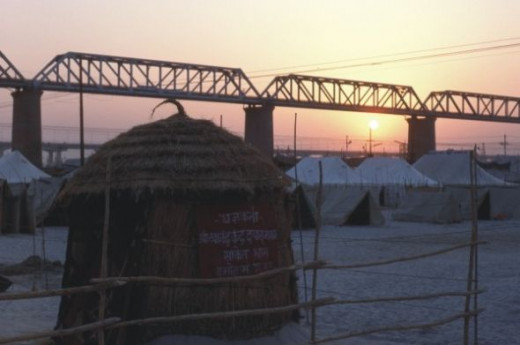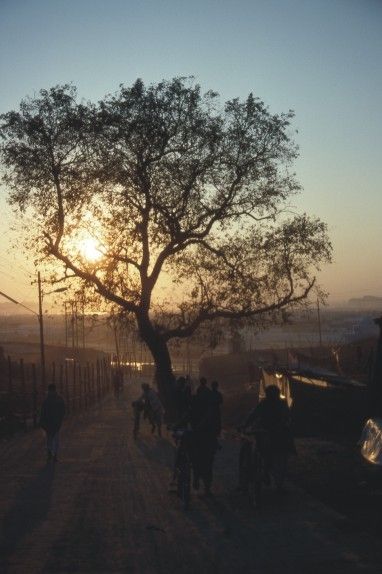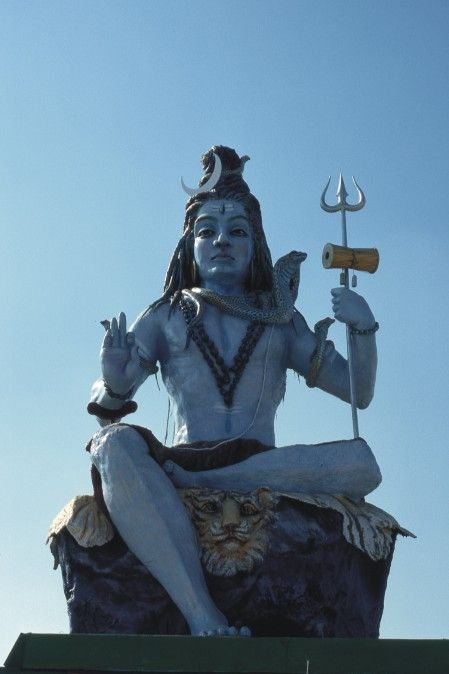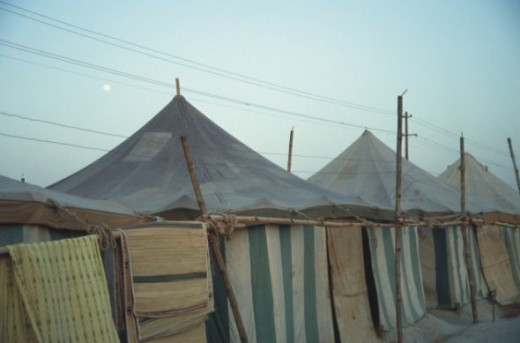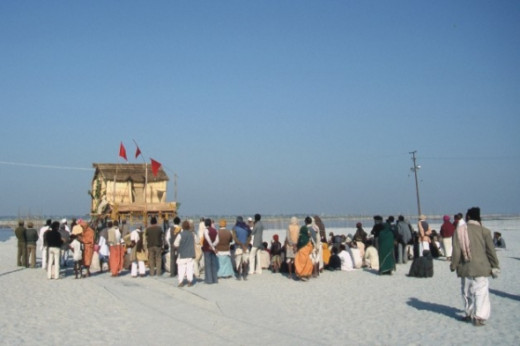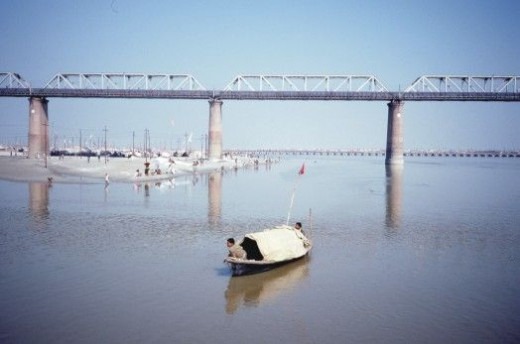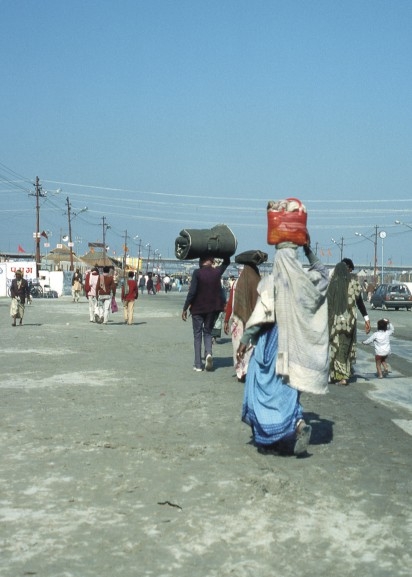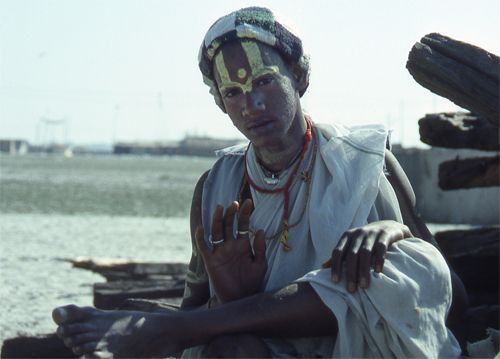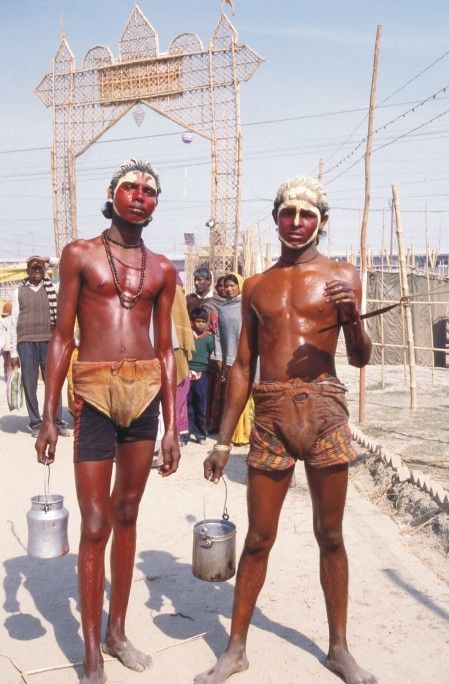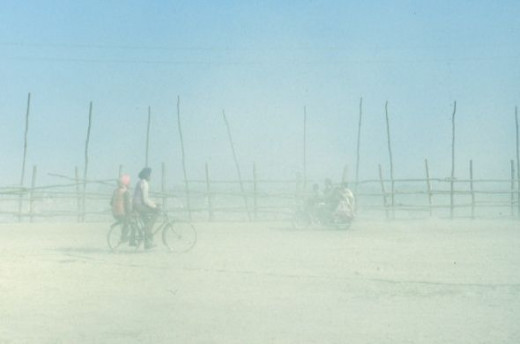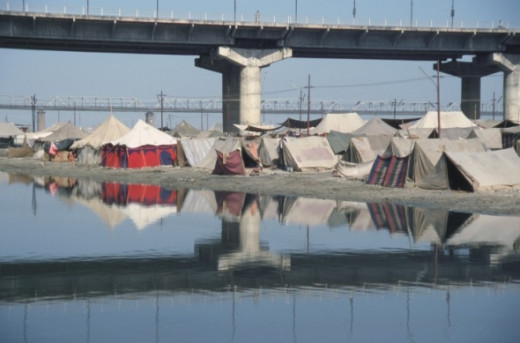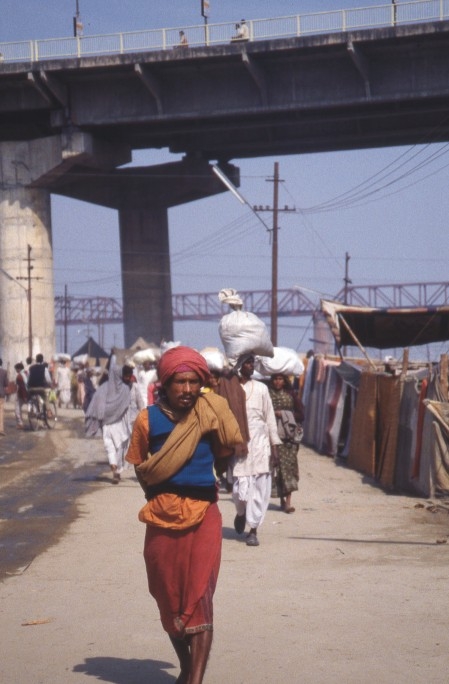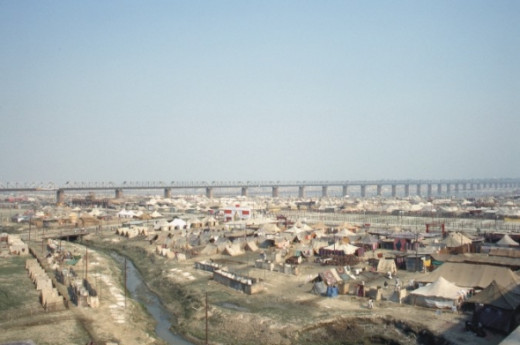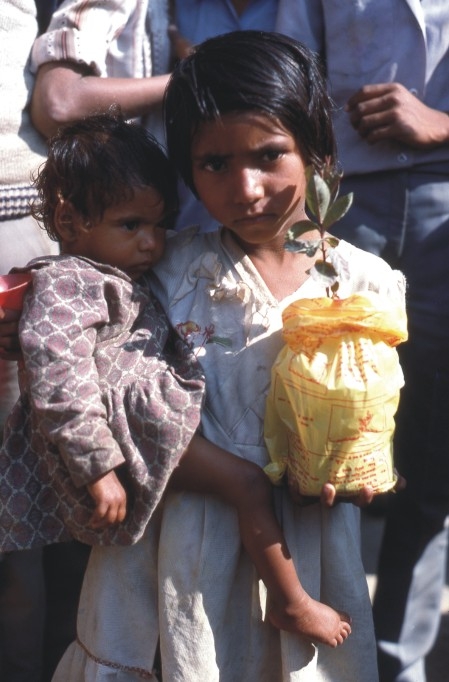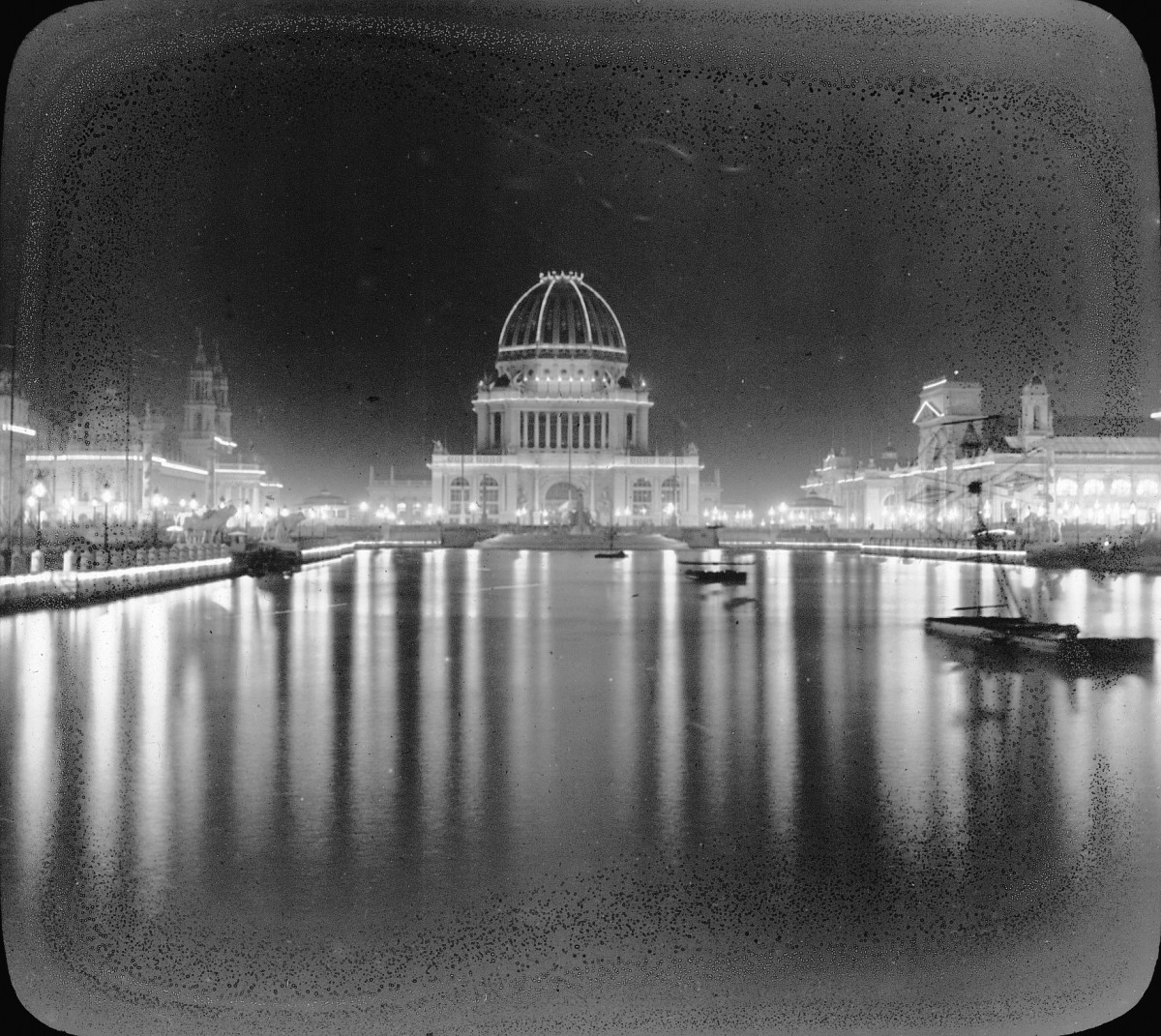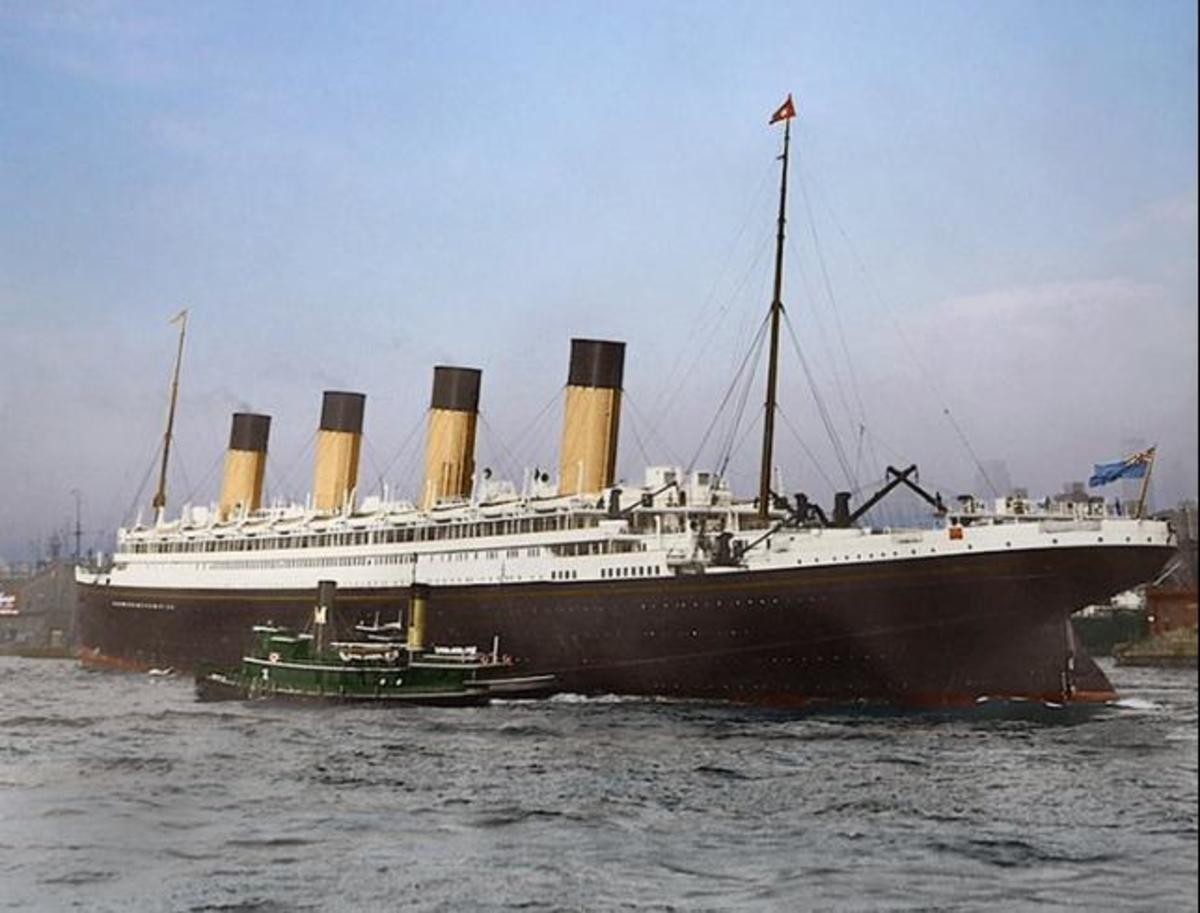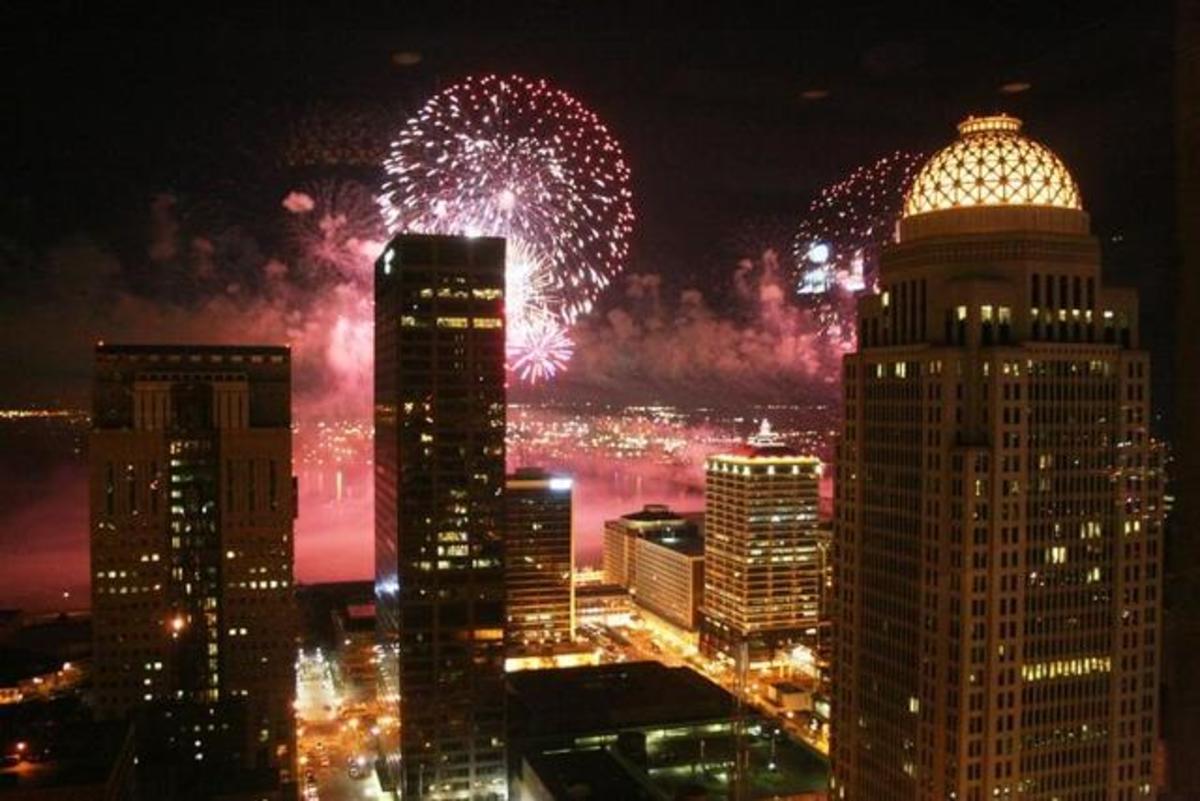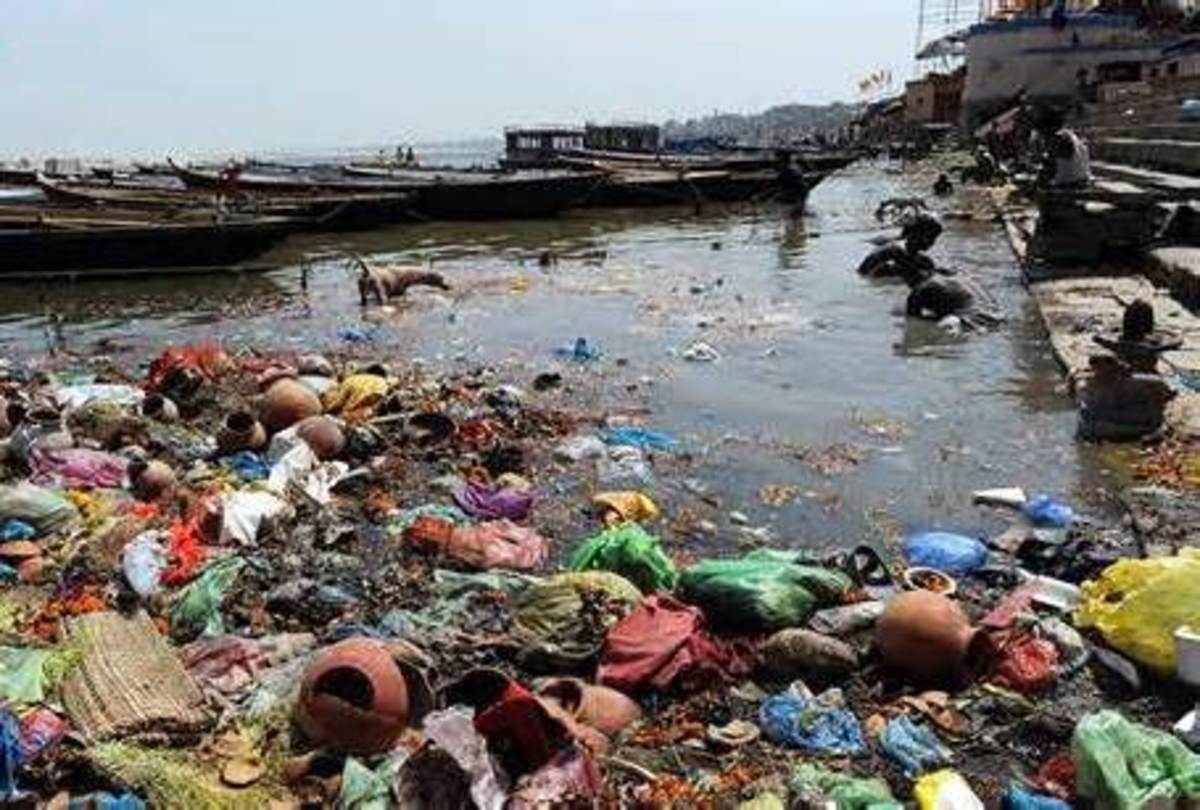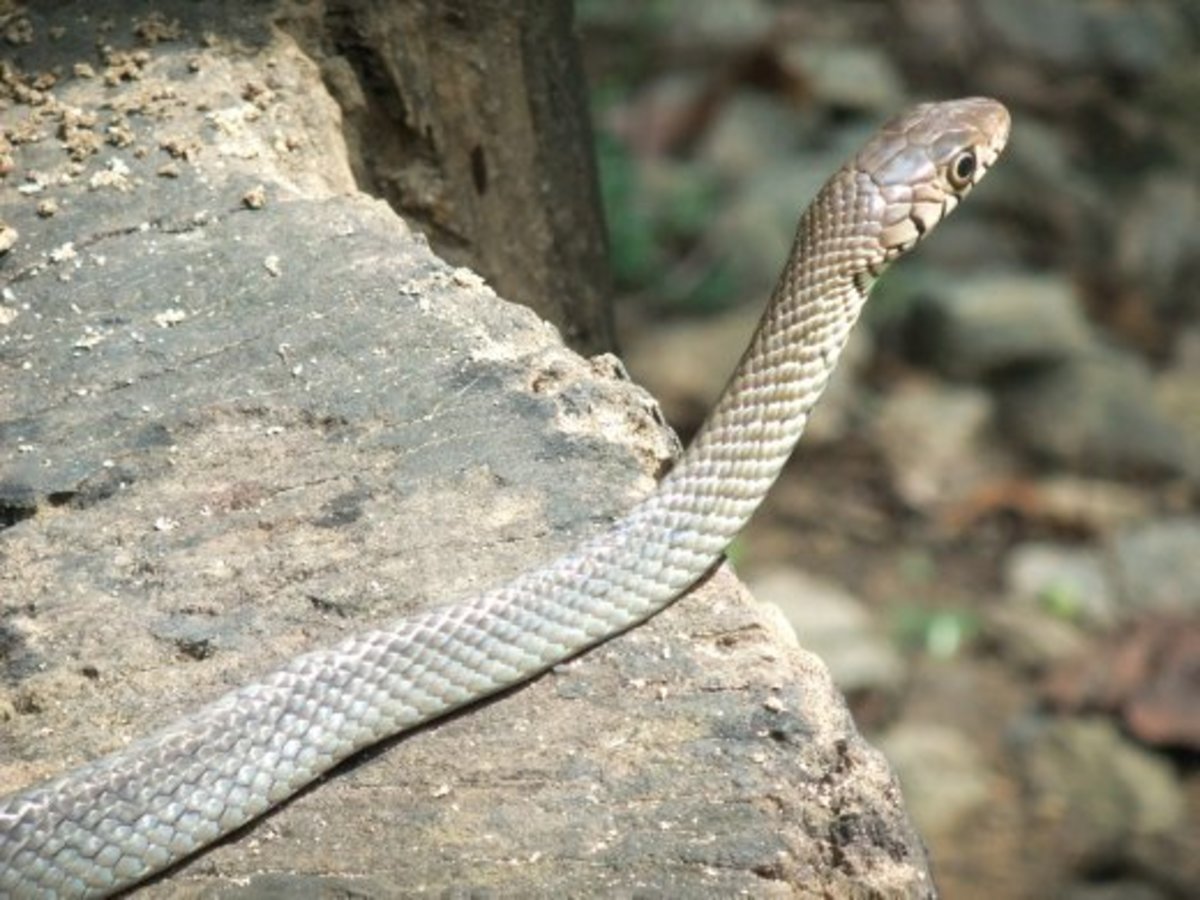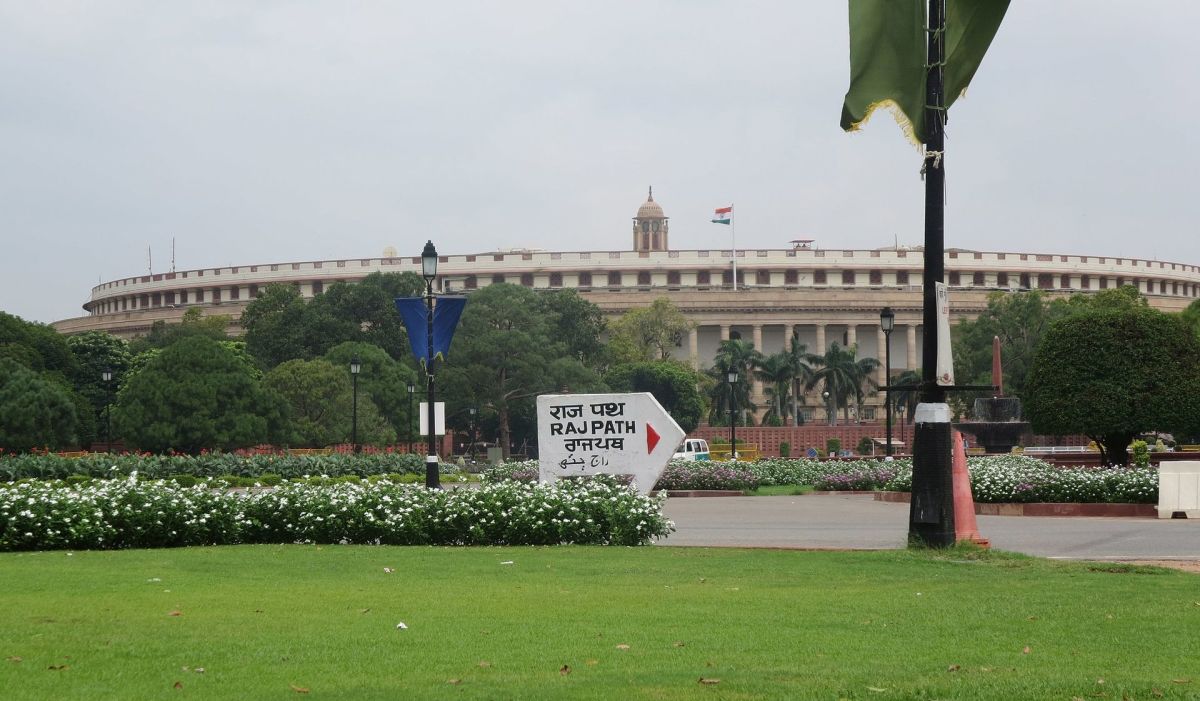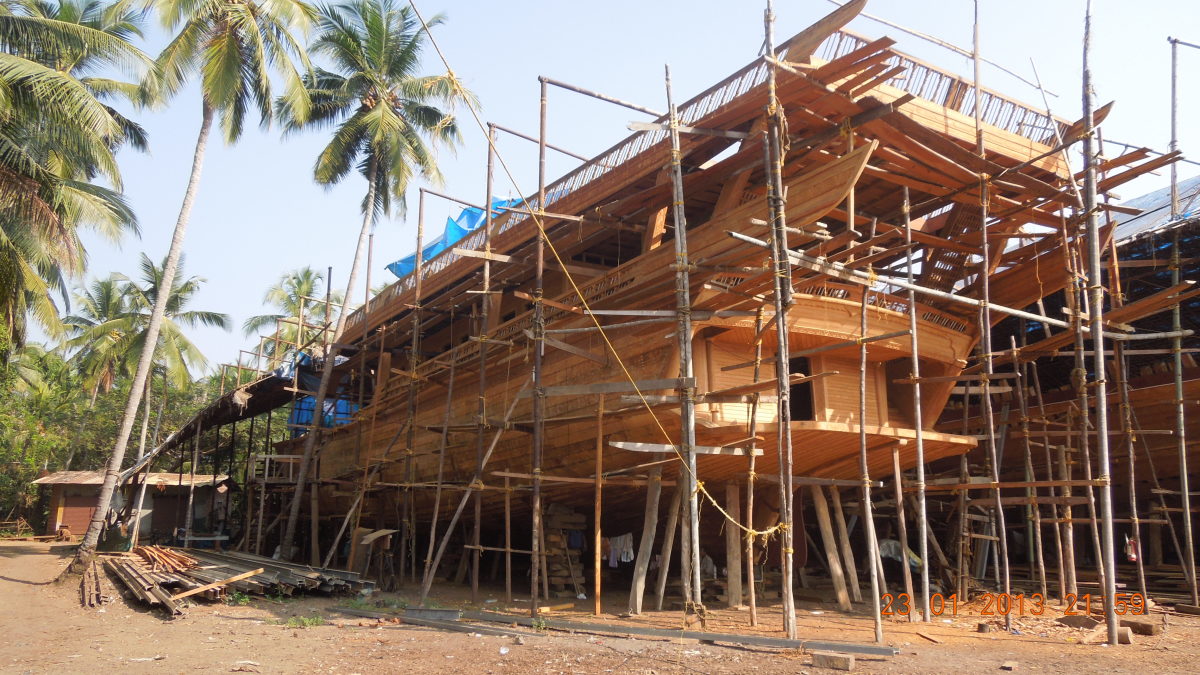Allahabad Kumbh Mela, the World's Largest Festival
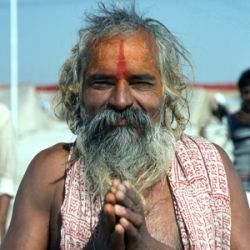
Allahabad Kumbh Mela in India is the World's Largest Gathering
Every 12 years, millions of people descend on the city of Allahabad, U.P., India to bathe in the sacred waters of the Ganges River. They come for the world's largest and longest-running gathering of humanity, the Allahabad Kumbh Mela. Pilgrims believe that if they bathe in the Ganges (or Ganga) River during the weeks of the Kumbh Mela festival, all their sins will be purified.
I attended the Maha Kumbh Mela in Allahabad in 1989 and would love to go again. The next Maha Kumbh Mela festival in Allahabad will be held in January and February 2013. Here's more about this amazing festival.
(Photo from the 1989 Allahabad Maha Kumbh Mela by Lisa Howard.)
The Kumbh Mela has been going on for centuries. The festival is based on teachings from the Puranas, ancient religious texts. According to the Puranas, the devas or demigods needed help from the demons to churn the ocean for the nectar of immortality. But when the amrita or nectar was finally ready, a fight broke out. The deities and demons waged a battle for 12 divine days (equal to 12 human years), and during the scuffle, a few drops of the nectar fell from the kumbh or pot holding the elixir. One drop fell in each of four locations - Prayag (the ancient name for Allahabad), Haridwar, Nasik and Ujjain.
The Kumbh Mela festival takes place in each of these cities once every 12 years. The exact dates of the event are based on astrological signs, and it is thought that bathing in the Ganges river during this time will purify you of your sins.
Millions of people attend each mela, or fair. But the largest and most auspicious is the Kumbh Mela in Allahabad. An estimated 60 million people from around the world attended the last Allahabad Kumbh Mela in 2001.
The Allahabad Kumbh Mela is thought to be particularly auspicious because it is the place where Brahma is said to have offered the first fire sacrifice after creating the world. He named it Prayag, or "place of sacrifice." The city, however, was renamed by Emperor Akbar in 1575.
Brahma also deemed Prayag as Tirth Raj or the King of all pilgrimage centers. Allahabad is located at the meeting point of three rivers - the Ganga, the Yamuna and the mythical Saraswati. Bathing in these rivers during the mela is thought to clean away your sins and is the main reason most devotees come for the mela. People travel for hours, days or weeks to reach the mela. Some come just to take a single dip in the river and then return to their lives, while others stay for the the entire time, taking the opportunity to visit with the normally reclusive sadhus, swamis, monks, mystics, gurus, yogis and other spiritual leaders who set up camp during the festival.
(Photos from the 1989 Kumbh Mela by Lisa Howard)
Record-Breaking Kumbh Mela Attendance - Millions come from around India and the world
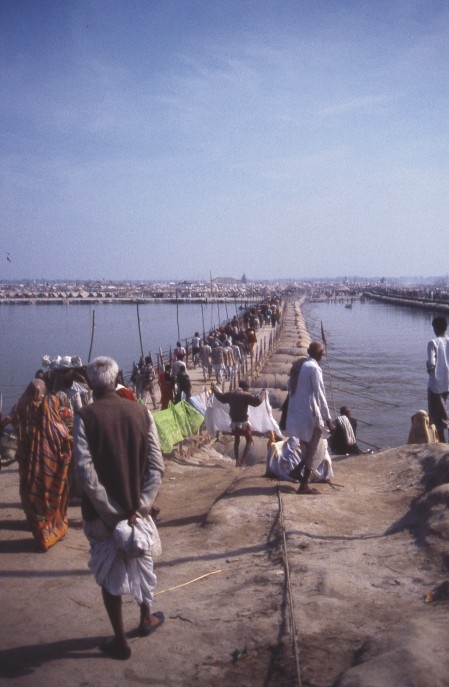
Approximately 60 million people attended the last Allahabad Kumbh Mela in 2001, making it the largest gathering of people ever recorded at that time. The 2010 Haridwar Kumbh Mela eclipsed that number, however, with approximately 70 million visitors. To put these numbers in perspective, the 2001 population of the entire United Kingdom is estimated at a little more than 62 million people, and Travel & Leisure Magazine just declared Times Square in New York City the #1 most-visited tourist attraction in the world with 39.2 million annual visitors. The 2013 Allahabad Kumbh Mela is expected to draw an even larger crowd than the previous events.
(Photo from the 1995 Ardh Kumbh Mela in Allahabad by Lisa Howard)
Allahabad Kumbh Mela Photos - Some of my photos from the 1989 Maha Kumbh Mela
Click thumbnail to view full-size







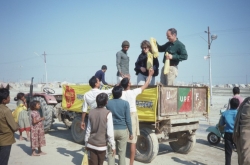
My Kumbh Mela Experiences
The 1989 Maha Kumbh Mela and 1995 Ardh Kumbh Mela
I've been fortune enough to visit the Allahabad mela twice - once in 1989 for the Maha Kumbh Mela and once in 1995 for the Ardh Kumbh Mela, a somewhat smaller version of the event that is held midway through the 12-year festival cycle.
Both events were huge. The mela grounds cover 3600 acres of land along the Ganga River, and an entire city springs up here for the duration of the festival. This temporary city has everything a pilgrim could need, from tents and toilets to markets and medical care. According to the book Kumbh Mela: The World's Largest Act of Faith (see below), newspaper reports said the 1989 Kumbh Mela preparations included 6000 electrical poles, 16,000 outlets, 6000 round-the-clock sanitation employees, 13500 latrines, 22 fire fighting stations, 300 lifeguards, 100 doctors and nurses on call round-the-clock and 20,000 policemen and Indian National Guard members.
The mela grounds are noisy, crowded, dusty and yet... somehow serene amid the chaos. Every person here has come for a spiritual purpose. It's not like a sporting event where unruly fans swear at the opposing players or drink too much alcohol and get out of hand. Rather, people have come here to pray, to listen to spiritual discourses and to purify their soul.
Make no mistake - a crowd of millions is loud, particularly with loudspeakers blaring music and microphones amplifying the voices of holy men as they speak to their followers. But the atmosphere is different than any large gathering I've ever attended anywhere else. Amid the noise and chaos, you can duck into a tent to meet with a holy man, and the outside noises just seem to fade into the background. You can walk to the sangam, the meeting point of the three rivers where pilgrims come to take a sacred dip in the waters, and suddenly the cacophony behind you spills away like the waters of the river. It is possible to find silence amidst the noise, if only by shutting out the sounds around you.
It is also possible to find a lot of confusion, particularly if you're a Westerner who doesn't speak Hindi or any other Indian language, didn't grow up hearing stories of the Mahabharata and the Ramayana, and has a hard time telling a follower of Shiva from a follower of Vishnu. That pretty much described me at my first Kumbh Mela. I came with a organization I had been volunteering for - Trees for Life (TFL). TFL helps local people in developing nations plants fruit and fuel trees as a way to lift themselves out of poverty. They have also now expanded their programs to include education for children.
I attended my first Kumbh Mela with TFL to distribute tree saplings to mela pilgrims. (I'm the middle person handing out saplings in the photo shown here.) At the time, I had a very rudimentary understanding of the mela, its history and its purpose. And my limited knowledge of what was going on did lead to some adventures.
For instance, I was completely clueless when a man started yelling at me in a language I didn't understand for taking a photo of a sunset over the river. Do you see anything wrong with the photo at left? It was only after my friend translated the angry shouts that I discovered the beautiful sunset I was shooting happened to be right over the outdoor restroom area. I had no idea! (And I still don't think you would ever know that by looking at this photo. I wouldn't publish it if I thought it was offensive.)
Another time I found myself confronted with a naked holy man who wanted me to eat cow dung ashes. The proper response for such a request was never covered in any etiquette book I ever read! If you' like to know how I responded without insulting my host, you can read about my encounter with a naked naga sadhu here.
And despite often feeling lost amidst spiritual rituals I didn't understand, I did have something of an epiphany after meeting a swami at the Allahabad Kumbh Mela. I'm not sure I can give him credit for my sudden insight, but I am pretty sure the answer wouldn't have come to me in quite the same way without visiting the mela. I came to the Kumbh Mela with very few expectations, but it did change my life. It's an adventure I wish everyone could experience.
Photos from the 1995 Ardh Kumbh Mela in Allahabad - More photos from my adventures
Click thumbnail to view full-size





Shortcut to Nirvana - A Kumbh Mela documentary
If you'd like an inside look at the Kumbh Mela without trekking all the way to India, Shortcut to Nirvana is an excellent introduction. This Kumbh Mela documentary has won several awards, including Best Documentary, Audience Award at the Sedona International Film Festival and Best Documentary at the Tiburon International Film Festival.
The film was shot on location at the 2001 Maha Kumbh Mela in Allahabad and includes interviews with spiritual leaders at the event, such as Pilot Baba, as well as interviews with both foreigners and Indians attending the event. It also includes footage of H.H. The Dalai Lamai's visit to the festival to promote world peace. It's a great DVD to own if you're a former Kumbh Mela attendee or just want to know more about it, but if you don't feel the need to own a physical copy, you can rent it for $2.99 from Amazon. I highly recommend this film for anyone wanting to learn more about the Kumbh Mela.

This one pilgrimage is equal to a thousand regular pilgrimages. - Jasper Johal, Shortcut to Nirvana
This book was published in 1991, but it's still a great way to learn about the Kumbh Mela. The very readable text explains the sites and sounds of the mela, as well as the spiritual significance, and it's illustrated with great color photos from the 1989 Kumbh Mela in Allahabad.
The 1989 Kumbh Mela is the one I attended, so I particularly like this book. One of the holy men I saw at the mela was Devara Baba, who was purported to be over 250 years old at the time. Devara Baba is featured in this book and also appears in the Kumbh Mela documentary Shortcut to Nirvana, which was filmed 12 years later at the 2001 Allahabad Kumbh Mela. I thought it was particularly interesting to look at images of him from both of these works because it's very hard to tell if he had aged much.
Allahabad is located in northern India in the state of Uttar Pradesh. The nearest international airport is New Delhi.
The ancient name of the city is Prayag (Sanskrit for "place of sacrifice"), and it holds a special significance for Hindus, as it is believed to be the place where Brahma offered his first sacrifice after creating the world, and it is located at the Triveni Sangam, the confluence of three holy rivers - the Ganges, Yamuna, and mythical Saraswati River of Enlightenment.
The city is also the ancestral home of former Prime Ministers Jawaharlal Nehru and Indira Gandhi and is now one of the fastest growing cities in India.
If You're Going to the Kumbh Mela Festival - Bring a good guidebook to India
India is a spectacular country to visit and there's more to see here than you could possibly experience in one trip. So be sure to make the most of it with a good guidebook. It will help you get around, as well as give you insight into the places and things you'll be seeing and doing.
The ancient name of Allahabad was Prayag, or "Place of Sacrifice."
Kumbh Mela Bathing Dates 2013
Paush Poornima - January 27
Mauni Amavasya - February 10
Basant Panchami - February 15
Maghi Poornima - February 25
Image: Hindu Pilgrims Bathing in River at Kumba Mela Festival, Allahabad, India by Paul Beinssen. Available from AllPosters.
"It is wonderful, the power of a faith like that, that can make multitudes upon multitudes of the old and weak and the young and frail enter without hesitation or complaint upon such incredible journeys and endure the resultant miseries without repining." - Mark Twain
My first experience at the Allahabad Kumbh Mela was in 1989 when I distributed tree saplings with Trees for Life.
Trees for Life is a nonprofit organization that helps people in developing countries become self-sufficient. They started by planting trees in India and have expanded their programs to other parts of the world and into other areas of self-help, such as education. If you'd like to donate trees or learn more, please visit Trees for Life.org or click the banner shown here.

